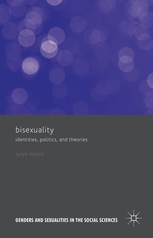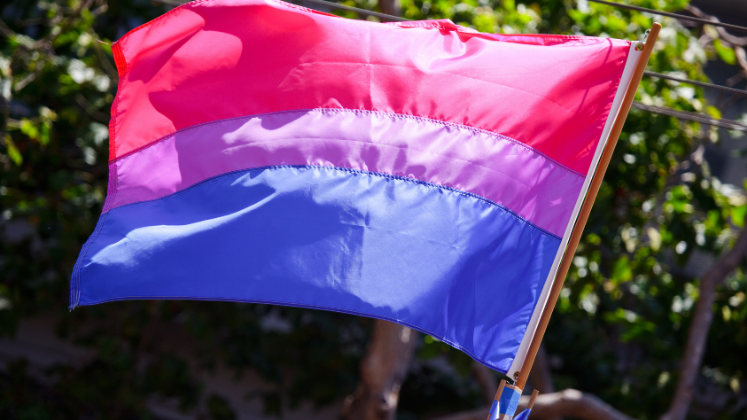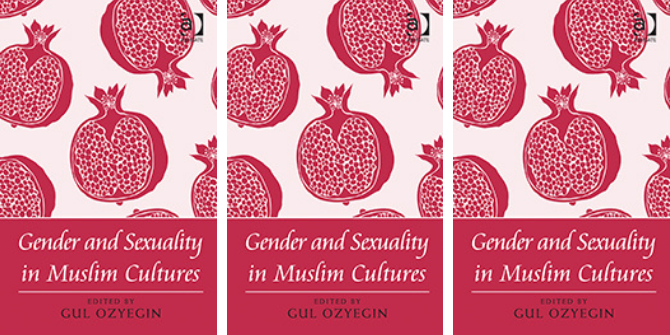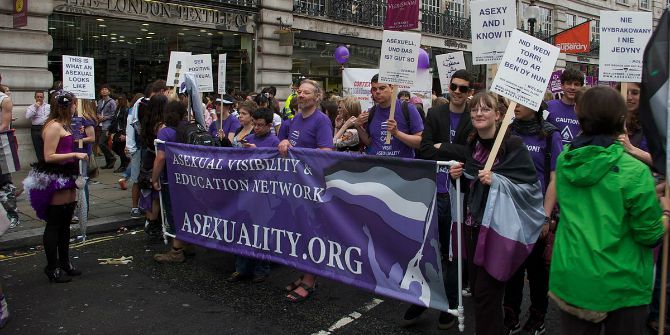Authored by Surya Monro, Bisexuality: Identities, Policies and Theories is an accessible book that identifies and analyses key aspects of the lives of bisexual and other non-monosexual individuals, exploring questions of community, relationships and identities through participant interviews. Danni Glover finds this a solid theoretical introduction to the social study of bisexuality that avoids homogenising bisexual experience under a Western lens and also highlights interesting gaps in existing literature.
Bisexuality: Identities, Politics and Theories. Surya Monro. Palgrave MacMillan. 2015.
Find this book (affiliate link): ![]()
 Surya Monro is a prolific bisexual activist, researcher and writer, and her new book, Bisexuality: Identities, Politics and Theories, is a theoretical approach to the communities, identities, political and social organisations and relationships of bisexual-identified people, in particular those in the UK. Drawing on Monro’s previous research work with her collaborator Diane Richardson (Sexuality, Equality and Diversity), Colombian researcher Camilo Tamayo Gòmez and the impactful theories of Kimberlé Crenshaw amongst others, Bisexuality is an accessible social studies book that identifies and analyses key aspects of the lives of bisexual and other non-monosexual individuals.
Surya Monro is a prolific bisexual activist, researcher and writer, and her new book, Bisexuality: Identities, Politics and Theories, is a theoretical approach to the communities, identities, political and social organisations and relationships of bisexual-identified people, in particular those in the UK. Drawing on Monro’s previous research work with her collaborator Diane Richardson (Sexuality, Equality and Diversity), Colombian researcher Camilo Tamayo Gòmez and the impactful theories of Kimberlé Crenshaw amongst others, Bisexuality is an accessible social studies book that identifies and analyses key aspects of the lives of bisexual and other non-monosexual individuals.
Bisexuality is broken into six chapters (plus an introduction) focusing on social theory; intersectionality; sex, relationships, kinship and community; bisexuality, organisations and capitalism; bisexuality and citizenship; and bisexuality, activism, democracy and the state. Monro’s methodology was to conduct interviews with individuals who identified as bisexual and collate their anecdotal experience with existing literature. Though Monro acknowledges that the sizes of her participant samples were problematically limited – 25 British and 6 Columbian participants – the book nevertheless provides a solid theoretical framework for future study and brings together statistical foundations to support the anecdotal research throughout.
Monro observes that the ‘academic marginalisation of bisexuality […] has created a substantial gap in contemporary sexualities literature’ (2), but the key findings of this book will certainly come as no surprise to bisexual members of the LGBT community. Participants in the research stage identified a sense of marginalisation as bisexuals, both in general society and in the LGBT+ community at large. Bisexual individuals were not only marginalised in their communities but also erased, particularly by services aimed at LGBT+ people including health provision and workplace inclusion. Certain bisexualities – for example, ‘performative’ bisexuality (in which the action has the appearance of bisexuality even if the person performing it does not identify as such) among young women – were also commodified by a capitalist gaze. Transgender politics were therefore suggested as a relevant inroad to understanding bisexuality because:
many bisexual people are also trans or gender-diverse, and […] because the transgender destabilisation of gender binaries and the movement towards other models, such as seeing gender as a spectrum rather than as discrete male/female categories, opens up a space for thinking about non-binary models of sexuality (47-48).
 Image Credit: ‘The bisexual pride flag’ by Peter Salanki licensed under CC BY 2.0
Image Credit: ‘The bisexual pride flag’ by Peter Salanki licensed under CC BY 2.0
One of the great strengths of this book is that it does not homogenise bisexual experience through a Western lens; the aforementioned engagement with trans politics has been useful in achieving this heterogeneity. The experience of British bisexuals (predominantly white (7)) is clearly differentiated from that of Columbians, whose recognition as authentically bisexual people has been more recent and whose work in bisexual activism has had largely different goals (for instance, Colombian bisexual politics have intersected with post-colonial identity-making). The book also deals in a more limited way with Indian non-binary and bisexual groups such as hijras, observing that Indian bisexualities have encompassed not only behavioural bisexuality, but also a ‘psychological dualism’ (67) that was stigmatised by British colonialism. The section on Indian bisexuality strikes me as being particularly ripe for expansion in academic scholarship; here, Monro is indebted to the work of Venkatesan Chakrapani, L. Ramki Ramakrishnan and others.
The wider discussion of intersectionality in the book is also worth highlighting. Intersectionality – i.e. the dynamic understanding of the interplay between various identities such as gender, race, ability, sexuality, etc. – was first proposed by Crenshaw in 1989 and has been a mainstay of writings on identity politics, particularly by black feminists, ever since. Monro shows through transcripts of participant interviews that there are intersectional considerations within the bisexual community which are largely neglected, in particular those relating to race/ethnicity and faith, socioeconomic class and access to the community. As Monro explains: ‘It is important to avoid developing a hierarchy of oppression when analysing patterns of inequality and privilege because to do so undermines the possibilities of positive collaborations which support diversity and equality’ (72); intersectionality is identified as the route to progress in this respect. It also gives way to specifically post-colonial deconstructions of sexualities and gender later in the book.
Chapter Four, ‘Sex, Relationships, Kinship and Community’, is interesting as it is the most explicit and detailed academic discussion of the interpersonal bisexual experience in the current literature, giving language to networks participated in by bisexuals such as erotic communities (including swinging and BDSM), polyamory, bisexual co-parenting and families as well as organised events such as BiCon. ‘How do bisexual people live their lives? How do they ‘‘do’’ sex and relationships, parenting, and are for others? What networks and communities are important to bisexual people?’ (84). The apparent directness and, perhaps, obviousness of the research questions that lead into the chapter demonstrate the dearth of scholarship on subaltern non-monogamous sexualities, outlined by Monro earlier in the book: ‘Whilst care and intimacy have been addressed in the literatures about gay men, lesbians, and transgender people […] there has been no such analysis of bisexual practices of care, beyond some anecdotal material […] and texts that include bisexual people in their title but have no bi-specific content’ (90). Monro also highlights how non-normative communities participated in by bisexual people, such as BiCon, paradoxically appear exclusive to middle-class/right-wing/middle-aged bisexual people (ostensibly ‘normative’, perhaps), because they are a space of radical inclusivity to those who participate in alternative lifestyles (97).
As a blogger and academic with an interest in non-monosexual experiences and the LGBT+ community, I found Bisexuality: Identities, Politics, and Theories to be an accessible piece of research, largely helped by its liberal inclusion of participant anecdotes. Monro has noted that the research could have been improved by a larger sample size, but as the book is supported throughout by reference to the scholarship of scholarship of other academics (largely orchestrated, it must be said, by Monro’s editorial work in other volumes), it functions very well as an introduction to bisexual social studies. As also suggested by Monro, this book would be well-serviced by being read in conjunction with contemporary transgender theorists such as Julie Nagoshi, Stephan/ie Brzuzy and Susan Stryker. The book highlights several interesting gaps in existing scholarship, such as Indian bisexualities and bisexual parenting, but provides a solid theoretical framework upon which to start further research into these topics.
Note: This review gives the views of the author, and not the position of the LSE Review of Books blog, or of the London School of Economics and Political Science. The LSE RB blog may receive a small commission if you choose to make a purchase through the above Amazon affiliate link. This is entirely independent of the coverage of the book on LSE Review of Books.








1 Comments